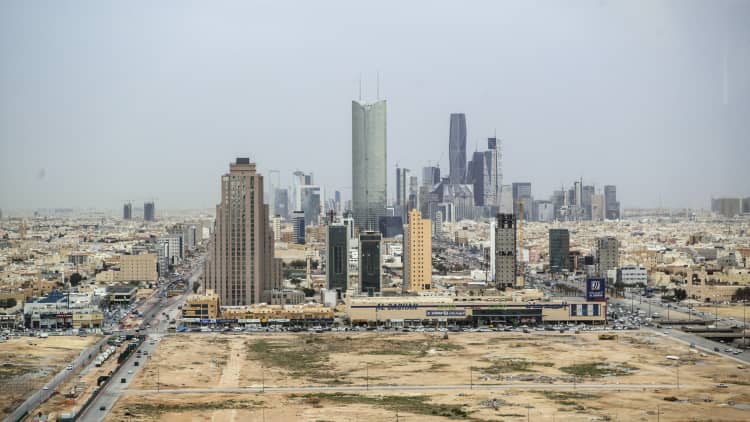
Oil prices hit new 2018 highs as missile strikes on top crude exporter Saudi Arabia added to the market's worries about escalating conflict between the United States and Russia in Syria.
Brent, the benchmark for international oil prices, earlier climbed to its highest level in more than three years after President Donald Trump earlier warned Russia to "Get ready" for a U.S. missile attack on Syria, whose government Moscow has backed during its seven-year civil war.
The threat came after the Russian ambassador to Lebanon said his nation's military would intercept American missiles and potentially target the U.S. craft that fired them. The potential American strike follows a suspected chemical attack on the rebel-held city of Douma, allegedly by forces loyal to Syrian President Bashar Assad.
U.S. West Texas Intermediate crude ended Wednesday's session up $1.31, or 2 percent, at $66.70, its best settle since Dec. 3 2014. During the session, WTI rose as high as $67.45, a peak going back to Dec. 4, 2014, when it touched $68.22.
was at $72 a barrel, up 96 cents, or 1.4 percent, shortly before its settlement. The contract earlier rose to $73.09, the highest level since Nov. 28, 2014, when it hit $73.41.
John Kilduff, founding partner at energy hedge fund Again Capital, earlier on Wednesday said U.S. crude prices could be heading to $70 after breaking through the previous 2018 high of $66.66.
The morning price spike was completely due to the Trump tweet, which left the market to parse the president's meaning, according to Kilduff. The question, he said, is whether Trump will order the military to solely target Syrian assets, or take aim at Iran, which also backs Assad and has a significant presence in Syria.
Such an attack would come just one month before Trump faces a deadline that could see him restore sanctions on Iran, OPEC's third largest oil producer.
"That's the crux of the matter. Is it a pin prick or is it something that sets us up for escalation?" said Kilduff.
Saudi Arabia's air defense forces intercepted at least three ballistic missiles fired at Saudi cities by Yemen's Houthis, who claimed to have targeted the defense ministry in Riyadh and a Saudi Aramco distribution facility in Najran on Wednesday.
Three rockets were intercepted in the capital and the southern cities of Jizan and Najran, according to state media and the Saudi-led coalition fighting the Iran-aligned Houthis in Yemen.

The headlines followed reports that the Houthi rebels in Yemen had launched a drone strike on a facility owned by Saudi Aramco, the kingdom's national oil giant.
The Saudi-led invasion of Yemen has contributed to oil's geopolitical risk premium, as Houthis target Saudi oil assets. Last week, the Houthis attacked a Saudi oil tanker.
The records came despite government data showing U.S. crude stockpiles rose unexpectedly and American crude production continued to hit new highs.
Commercial crude inventories in the United States rose by 3.3 million barrels in the week through April 6 as oil imports jumped, the U.S. Energy Information. Analysts in a Reuters survey had anticipated a decline of 189,000 barrels.
"The missiles from the Houthis really overshadowed the EIA report, which was a fairly bearish number just from the perspective that we did see a pop in imports last week," said Matt Smith, director of commodity research at tanker-tracking firm ClipperData.
"All eyes are on geopolitical tension at the moment, not just because the market is that much more finely balanced, but because there are several pockets of geopolitical tensions," he said.

— Reuters contributed to this story.


